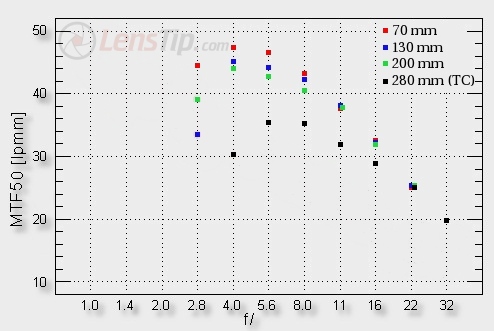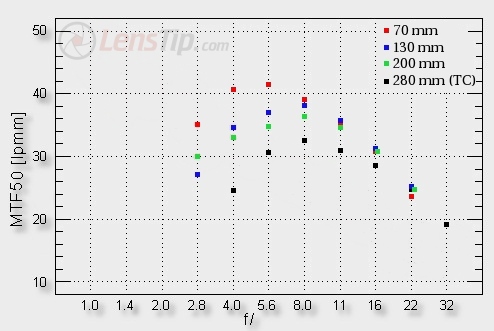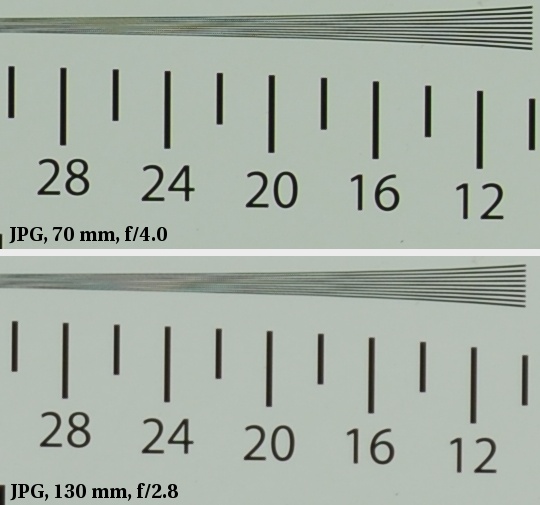Nikon Nikkor AF-S 70-200 mm f/2.8G IF-ED VR
4. Image resolution

The performance at 70 mm can be described as outstanding – it is not worse than that of the best prime lenses, available on the market. The formal resolution record, reached by f/4.0 aperture, which beats the Nikkor 1.8/50, the former record holder, is the best proof here. If we want to be honest, though, we must mention the fact that both values are very close – practically the difference between them is within the margin of error. Still it doesn’t change the fact that this performance is simply sensational.
Please Support UsIf you enjoy our reviews and articles, and you want us to continue our work please, support our website by donating through PayPal. The funds are going to be used for paying our editorial team, renting servers, and equipping our testing studio; only that way we will be able to continue providing you interesting content for free. |
- - - - - - - - - - - - - - - - - - - - - - - - - - - - - - - - - - - - - - - - - - - - - - - -
More interesting is the situation observed at 130 mm focal length where, at the maximum relative aperture, the lens undergoes a noticeable crisis. Fortunately on stopping down the aperture by one stop we see it return to the sensational level again.
Another interesting thing – the performance at the maximum relative aperture observed at 200 mm focal length is very good, on further stopping down even splendid. At this focal length you can’t find any traces of crisis, which were so evident in the middle of the range.
The cooperation between the tested lens and the converter deserves an average mark. By f/4.0 this set barely exceeds a decency level, so 30 lpmm, and only after the stopping down it reaches values we consider to be good.
The next picture presents the performance on the edge of the frame.

Once again 70 mm focal length doesn’t fare worse than the best fixed-focal lenses, giving images of excellent quality, already from the maximum aperture. 130 and 200 mm focal lengths perform equally well. Some minor reservations you can have about the average results by f/2.8 but on slight stopping down we see a significant improvement of the quality which reaches a very good level.
The maximum aperture combined with the converter doesn’t perform well, By using f/5.6 we can reach a medium level but nothing higher; even by f/8.0 you can find some reasons to complain.
How to sum up this part of the test? Although the Nikkor 70-200 VR didn’t avoid a small slip-up for the combination of 130 mm focal length and f/2.8 aperture, it still fares distinctly better than its predecessor or the rival Sigma – these two had excellent performance in the shorter part of the range but at 200 mm they lagged behind noticeably. The Nikkor’s 70-200 VR performance is definitely more even and also better at the maximum relative aperture.
At the end of this chapter we present some test scene crops from JPEG files taken on the Nikon D200 which were conventionally sharpened by the camera.
 |






